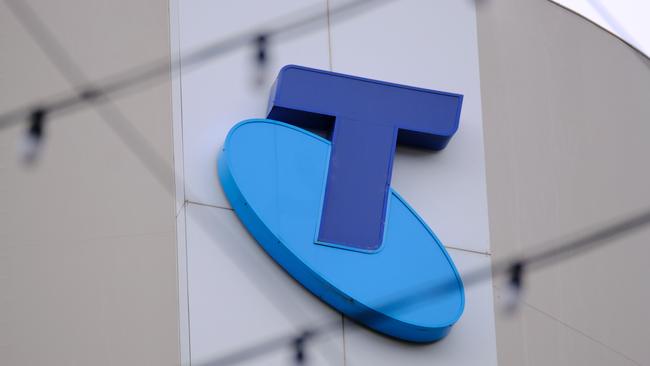Communication services sector roars ahead as ASX lags
It comes as little surprise that tech is 2024’s top-performing global sector amid AI hype and hope. But the communication services sector is right behind, boosting returns of global stocks.

It comes as little surprise that tech is 2024’s top-performing global sector amid AI hype and hope. But the little-known communication services sector is right behind, boosting global stocks’ 15.4 per cent returns through to July 5 – with its absence Down Under partly explaining the ASX’s lag.
So what is communication services? Where can Aussies shop for it? And can its hot run last? Yes … and no. This sector’s odd mix of growthy, tech-adjacent firms and old stodgy telecom tells a tale of diverging industries. Let me explain.
“Communication services” is fairly new. Previously there was just the telecoms sector – classically defensive, highly regulated slow-growers. Think Telstra.
Globally, telecoms feature steady revenues, big dividends and low volatility – rendering them economically insensitive.
Hence, since 2000, telecoms led world stocks in seven of eight broad market drops exceeding 10 per cent (excluding dividends). But good defence meant bad offence: Telecoms lagged in seven of eight upturns. The average underperformance? A whopping 33.6 percentage points! Since 2022’s low, telecoms delivered just 11.3 per cent, including dividends, while world stocks soared 53.5 per cent. A huge lag.
But in 2018, index providers S&P and MSCI meshed several tech giants with defensive telecoms together, creating the new communication services sector. This changed everything.
Boring phone lines yielded to search engines, social media and online commerce. Tech-like growth! The old telecoms industry remains, but less than one-sixth of the new sector’s market cap.
Meanwhile, the interactive media and services industry dominates, comprising 63 per cent of the sector. Nearly all of that is American – almost 99 per cent – just 0.6 per cent Australian. . You know the industry’s big names: Meta and Google parent Alphabet. But it also includes online dating, recruiting and more – cutting-edge categories with far lower barriers to entry than telecoms’ costly wirelines and towers.
Communication services also includes entertainment, 14 per cent of market cap – including big streaming and gaming firms. Also tech-like. The other 6 per cent is media – think cable providers, TV networks and advertisers.

Hence, large swathes of this diverse sector act like tech: low dividends, fat gross operating profit margins (GOPM), big reinvestment in innovation, buzzy offerings … and huge growth.
These tech-like tendencies boosted returns in up markets, including 2024’s. Consider: interactive media and services is up 42 per cent globally, year to date, driving communication services’ 28.2 per cent overall return. That is right behind tech’s 31.4 per cent, and trounces world stocks’ overall 15.4 per cent climb. The sector’s entertainment industry firms are up 18.2 per cent, too. But its telecoms segments languish: Wireless telecom has risen just 13.4 per cent while diversified telecoms – the stodgiest of the stodgy – is up even less, 7.8 per cent.
This divergence largely parallels performance throughout this global bull market. Since 2022’s low, comm services has roared 70.9 per cent globally, topping world stocks’ 53.5 per cent gain. Again, interactive media and services was best – up 120.3 per cent over that two-year stretch, topping tech’s 108.3 per cent. But entertainment is the only other industry topping world returns since 2022’s low – at 58.7 per cent.
Few envisaged tech-like parts of communication services soaring back in late 2022 – just the opposite, after their painful lag on the way lower to the bear market bottom. But they did! Sentiment got too sour towards their outlook. Then, amid the doom and gloom, markets looked forward, foretelling a rebound. They always pre-price economic and corporate realities three to 30 months out.
Their pre-pricing proved prescient. Interactive media and services’ first quarter earnings per share (EPS) soared 31 per cent year on year, clobbering world stocks’ overall 2.9 per cent EPS growth. World communication services’ EPS grew even more, 46.2 per cent, year on year.
So what now? Expect more strength from big, tech-like communications firms. They should continue thriving as corporations switch to offence after two years of cost cutting. Their fat GOPMs let them self-finance growth as spirits warm. The advertising market, which so many of these firms capitalise on, should reheat, too.
Consider: Communication services’ GOPM is 44 per cent, easily topping world stocks’ overall 31 per cent. The fattest reside in interactive media & services, boasting mammoth 64 per cent GOPM. That tops even tech’s 50 per cent.
That is where the leaders should be. Australia lacks exposure – the market is just 2.4 per cent comm services by market cap. About two-thirds of that is interactive media and services firms focused on online real estate, recruiting and car markets. Trendy, but tiny and credit-sensitive – hence down 1.3 per cent year-to-date while market-share-gobbling behemoths turbocharge world stocks. Look to the US for the juiciest opportunities. Then watch as these tech-like stocks drive this bull market higher in 2024.
Ken Fisher is the founder and executive chairman of Fisher Investments.





To join the conversation, please log in. Don't have an account? Register
Join the conversation, you are commenting as Logout